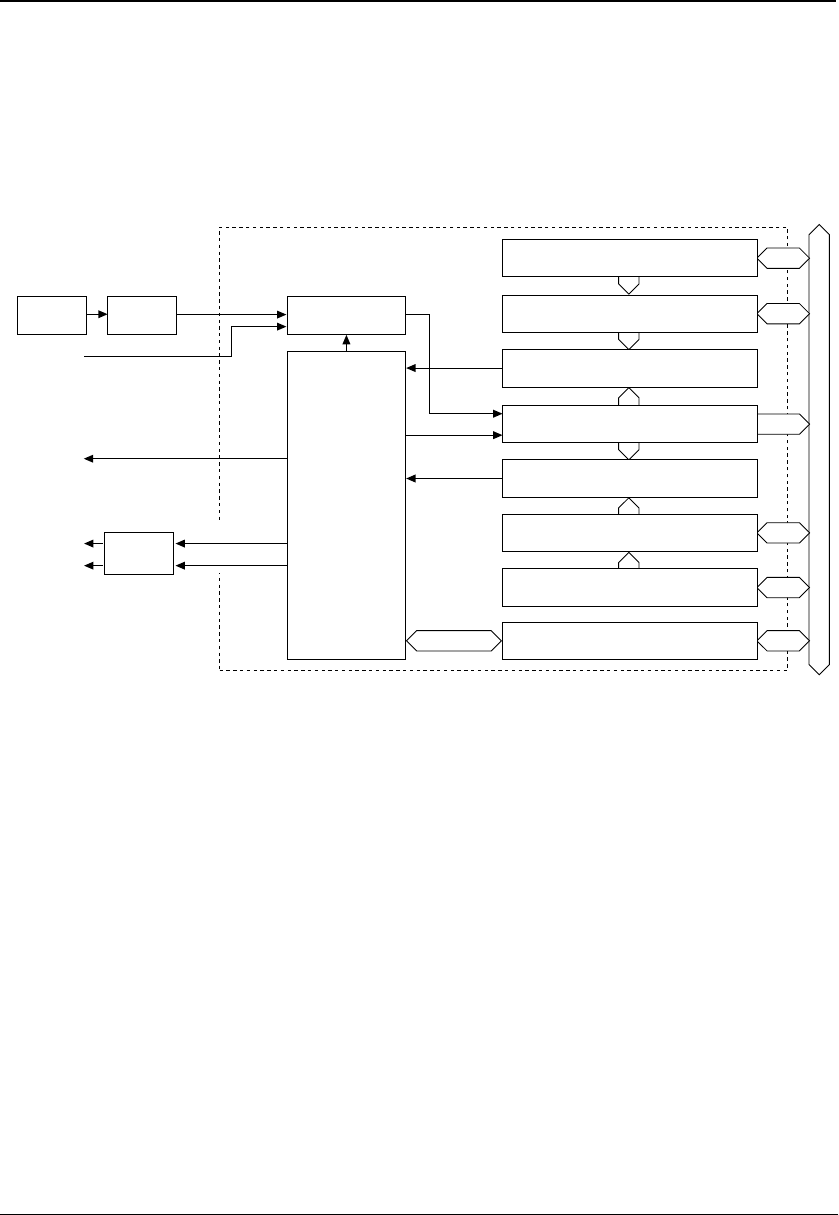
III PERIPHERAL BLOCK: 16-BIT PROGRAMMABLE TIMERS
S1C33210 FUNCTION PART EPSON B-III-4-1
III-4 16-BIT PROGRAMMABLE TIMERS
Configuration of 16-Bit Programmable Timer
The Peripheral Block contains six systems of 16-bit programmable timers (timers 0 to 5). They also have an event
counter function using an I/O port pin.
Note: On the following pages, each timer is identified as timer x (x = 0 to 5). The functions and control
register structures of 16-bit programmable timers 0 to 5 are the same. Control bit names are
assigned numerals "0" to "5" denoting timer numbers. Since explanations are common to all timers,
timer numbers are represented by "x" unless it is necessary to specify a timer number.
Figure 4.1 shows the structure of one channel of the 16-bit programmable timer.
Data bus
16-bit up counter (TCx)
16-bit comparison data register B (CRxB)
Comparison register B buffer (CRBxB)
16-bit comparison data register A (CRxA)
Comparison register A buffer (CRBxA)
Timer x control register
Control circuit
Clock select circuitPrescaler
Clock
generator
Comparator
Comparator
INCLx
Clock output
TMx
Comparison A
interrupt
Comparison B
interrupt
Comparison
match B
Comparison
match A
Comparison A
Comparison B
Timer x
Interrupt
controller
External clock
EXCLx
Figure 4.1 Structure of 16-Bit Programmable Timer
In each timer, a 16-bit up-counter (TCx), as well as two 16-bit comparison data registers (CRxA, CRxB) and their
buffers (CRBxA, CRBxB), are provided.
The 16-bit counter can be reset to "0" by software and counts up using the prescaler output clock or an external signal
input from the I/O port. The counter value can be read by software.
The comparison data registers A and B are used to store the data to be compared with the content of the up-counter.
This register can be directly read and written. Furthermore, comparison data can be set via the comparison register
buffer. In this case, the set value is loaded to the comparison data register when the counter is reset by the
comparison match B signal or software (by writing "1" to PRESETx bit). The software can select whether
comparison data is written to the comparison data register or the buffer.
When the counter value matches to the content of each comparison data register, the comparator outputs a signal that
controls the interrupt and the output signal. Thus the registers allow interrupt generating intervals and the timer's
output clock frequency and duty ratio to be programmed.


















